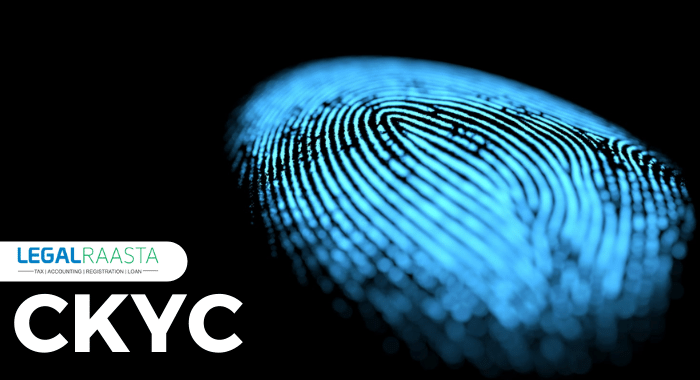CKYC- Guide on KYC and Check CKYC Number
Introduction
With the rise in financial fraud, it’s more crucial than ever to preserve accurate customer records in order to track down any unusual activity. CKYC regulations were put in place to prevent the financial sector from being ruined by unlawful conduct. This aids in gaining a deeper understanding of the customer. This also contributes to the investment’s safety.
CKYC has taken the position of KYC (Central Know Your Customer). Earlier KYC regulations included distinct KYC formats for different institutions. With the advent of CKYC, the customer will no longer be required to go through the KYC process with any other institution.
Once you’ve completed Central KYC, you won’t have to go through the same process again with another institution. This has relieved the investor of the burden of having to go through the KYC process all over again.
What is CKYC?
Central Know Your Customer is abbreviated as CKYC. It is a centralised repository that holds or saves all of the customer’s personal information. There used to be a separate KYC process for each financial entity. CKYC was established by the Central Government. This facilitates the consolidation of all KYC processes into a single platform.
As a result, once an investor’s entire Central KYC has been verified, he will not have to go through the same process again. If he wishes to invest in a different financial institution. After then, the data is digitally stored in a single central server. All authorised financial entities have access to this information. The data can be used by the financial institution as needed.
The CKYC Registry is managed by the Central Registry of Securitisation and Asset Reconstruction and Securities Interest of India (CERSAI). The CKYC was announced in the Union Budget for 2012-13. Following that, in July 2016, it began.
The government’s Central KYC project, also known as CKYC, aims to consolidate all financial firms’ KYC processes under one roof. Individual investors must meet KYC standards under the CKYC standard.
Features of CKYC
The CKYC registry aids financial institutions in avoiding the time-consuming process of onboarding consumers. They consolidate all pertinent information about the customer into a single window. This also helps to save a lot of time and effort.
Prior to the implementation of CKYC, opening a bank account was a nightmare. One had to frantically acquire paperwork in order to meet the financial institute’s requirements. This took a significant amount of time and effort. However, if you want to invest in another financial institution, you must go through the same documentation process.
As a result of the introduction of CKYC, the customer no longer has to go through the same documentation anguish. All of the data is kept in one place. This information is also available for authorised financial institutions to access. This saves time and effort for both the customer and the banking institution.
The following are some of CKYC’s characteristics:
- CKYC is a 14-digit code that is connected to the customer’s ID proof, after which the information is securely saved in an electronic format.
- The provided document is then validated with the issuer.
- When the KYC information changes, all affected institutions are alerted.
How does CKYC Work?
Before making any investment, you must now pass a central KYC process. This aids in getting to know the customer better and securing the investment. Customers’ KYC records are saved by the banking institution. This also aids in the prevention of financial fraud and questionable behaviour.
The customer must fill out a KYC form before investing with any fund house. The CKYC form must be completed and sent along with the required papers. CERSAI double-checks the KYC paperwork.
CERSAI verifies KYC documents and stores them digitally on one server. A 14-digit number is assigned to the customer and is connected to his ID proof. The KYC confirmed number will be this number.
If the customer decides to invest with another fund house once the process is completed, he will not be requested for KYC again.
By providing the CKYC number, the Fund House can request that CERSAI make the customer’s documentation available. All authorised financial entities have access to the data that has been stored. The data can be used by the financial institution as needed.
Types of CKYC Accounts
CKYC (Central Kentucky Youth Council) or CKYC (Central Kentucky Youth The Ministry of Finance mandated the implementation of Know Your Customer. There are four different types of CKYC accounts:
- Standard Account: The type of account that is created is determined by the type of document that a client submits. When a consumer presents any of the documents specified below as evidence of identity, a standard account is created. These are the documents:
- PAN Card
- Aadhaar Card
- Voter ID Card
- Driving Licence
- Passport, or
- NREGA Job Card
Another sort of CKYC account is the Simplified Measured Account. When the customer submits further valid documents, this account is created (OVD). These documents were created in accordance with RBI Circular RBI/2015-16/42. The KYC identification prefixes these accounts with the letter ‘L.’
- Small Account: When a customer provides simply his personal information and a photograph, he is given a small account. The KYC identifier prefixes these accounts with a ‘S’.
- eKYC Account with OTP: OTP-based KYC is completed online. A photograph and an Aadhaar card PDF file acquired from the UIDAI website are required to create this account. An OTP is then used to enable them. The KYC identifier prefixes these accounts with a ‘O’.
Documents required for registration
CKYC is a quick and painless procedure. All you have to do now is completely out the KYC documents and have them attested. CERSAI verifies all documents after they have been submitted.
The documents will be digitally kept in one server once they have been authenticated by CERSAI. After that, the consumer is given a 14-digit number that is connected to his ID proof. This number will be used to verify KYC compliance.
The following is a list of the KYC documents required for CKYC registration:-
- Signatures on a completed CKYC or KRA application form. A consumer must also complete an additional CKYC form.
- One self-attested identity verification • Address evidence (self-attested)
- A single photograph
Following CERSAI’s verification of these documents, the ID proof is assigned a 14-digit number. This is the CKYC-verified phone number. All of the information is saved digitally, and fund houses will be able to access these documents by providing a confirmed number. If the customer wants to invest in another financial institution, he does not need to go through the CKYC process again.
How to check CKYC numbers online?
After verification, the customer can verify his CKYC number at any financial services institution. Follow these simple steps to get started:
- First, go to any financial services company’s website that offers a CKYC check.
- Secondly. The customer’s PAN number must be entered.
- Finally, the customer must type in the security code that appears on the screen.
- Finally, a number appears on the screen. The CKYC number is this.
The customer should keep his CKYC number on hand for future reference. He will be able to save time while investing with any financial institution as a result of this.
Benefits of Central KYC Registration
Central KYC, often known as CKYC, has a number of advantages. It has it all, from time savings to easy accessibility. CKYC was created in February 2017 to make investing more convenient and hassle-free. Investors Clients will have to go through the CKYC process with a bank, mutual fund, or insurance provider once. They won’t have to go through the KYC process again if they invest with another financial institution.
The CKYC procedure is completed only once. It is a simple procedure that saves both the investors and the financial institution time. The following are some of the advantages of CKYC:-
- CKYC helps you save time and money. Once an investor has registered with CKYC, he or she does not have to go through the entire documentation procedure again. The onboarding process takes less time when investing with any other financial institution.
- Once registered, CKYC allows the financial company to quickly verify the investor’s KYC documentation. Both the investor and the financial institution benefit from this simplified onboarding process.
- CKYC authentication is also available to investors. They can easily update their information in the CKYC registry at any time.
- CKYC is a simple procedure. By following a few simple steps, any investor can become a member.
- CKYC also aids in the prevention of money laundering and other forms of criminal activity in the financial sector.
- This relieves the investment authorities of some of their responsibilities. It is now much easier to retrieve investment data. The authorities will also be able to see how many investments the customer has.
- The investor can buy or invest in many financial schemes using his CKYC number. This is true for insurance policies, mutual funds, and stock exchanges.
What is the difference between KYC, eKYC and CKYC?
KYC
All financial organisations use the Know Your Customer (KYC) procedure on a regular basis. To identify an investor, a KYC procedure is carried out. The identity of an investor is confirmed through this method. The investor must complete a form issued by the financial institution with his or her personal information. The form is filled out and submitted by the investor. An In-Person Verification step is added to this process (IPV). Following the completion of the verification, the KRA Registration Agency stores the appropriate investor data (KRA).
eKYC
Electronic KYC, or electronic know-your-customer, is a standard procedure. The Aadhaar Card number is used to verify an investor’s identity in eKYC. Authentication of the investor’s identity can be done when completing the eKYC process:
(a) Through the use of a One-Time Password. (Limits mutual fund investments to Rs 50,000 per year and requires investments to be made using an online electronic form.)
(b) KRA then uploads the data digitally in its record using biometrics (no limits on the investment amount here unless those are imposed by the programme / Fund House).
CKYC
CKYC is an initiative of the Indian government. It was first released in February of 2017. The purpose of CKYC is to allow investors to complete their KYC only once while investing. It allows an investor to invest in any fund firm without having to go through the KYC process again.
The CKYC process is administered by CERSAI. It permits investors to do business with any entity governed or regulated by the Indian government. Without having to undergo several KYC processes, the investor can transact with any RBI, SEBI, IRDA, or PFRDA registered company. As a result, onboarding becomes a breeze. It enables investors to participate in the market in greater numbers, making their financial journey simpler and less stressful.
How can I update CKYC?
The CKYC status can be updated online. To upgrade your CKYC, follow the steps outlined below.:
- First, go to camskra.com and get the “update in KYC detail.”
- Second, change the needed field and submit it to an intermediary with whom you have a relationship. A mutual fund, a bank, or a stockbroker can act as an intermediary.
- Finally, the middleman enters the information into the KYC – registration agency or KRA system that is linked to it. You can also check your CKYC status online.
There are now five KRAs. These organizations are in charge of performing your KYC and preserving your records. These organizations are –
- CAMSKRA (by Cams)
- CDSL Ventures Limited (a division of CDSL)
- DotEx International Limited (a unit of the National Stock Agency
- KARVY KRA (By Karvy)
You can check your CKYC KYC status by going to any KRA website.
What is the use of CKYC?
CKYC assists an investor in purchasing mutual funds or any other financial product. A KYC identity number is given to the customer. The customer’s ID proof is then linked to the number. This number can be used to invest in mutual funds by the investor.
Once the CKYC verification is completed, the investor is not required to repeat the process when interacting with another fund company.
Frequently Asked Questions
How do I verify my KYC online?
KYC is the initial stage in investing in mutual funds. If you are KYC compliant, you may easily verify your KYC online. You should go to CDSL Ventures Limited. You must enter your PAN and captcha code and then click the “Submit” button. As a result, the KYC status will now appear. If you are not KYC compliant, you can complete the KYC process offline, online, or via biometrics based on your Aadhaar number.
Your KYC, which must be outdated or incomplete, must have been processed by some intermediates. In such instances, you can also use the NDML website to check your KYC. The status will appear as pending if your KYC has not been validated. Otherwise, the KYC status is displayed as KYC registered.
Also Read,










